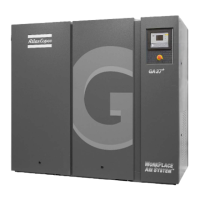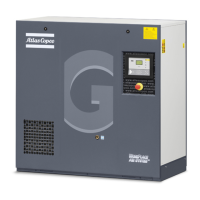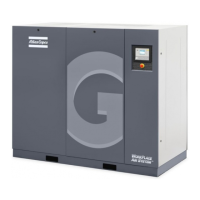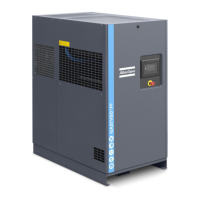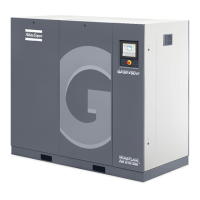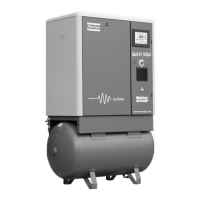The recovery water enters the unit at inlet connection (1). In heat exchanger (HE) the compression heat is
transferred from the compressor oil to the water. The water leaves heat exchanger (HE) via outlet
connection (2).
Water requirements for closed water circuits
The use of a closed water circuit minimises make-up water requirements. Therefore, the use of soft or even
demineralised water is economically feasible and eliminates the problem of scale deposits. Although the
heat exchanger is made of stainless steel, the water circuit connected to the compressor may require
corrosion inhibitors.
Consult section Cooling water requirements to minimise problems due to bad water quality. If in any
doubt, consult Atlas Copco.
Add an anti-freeze product such as ethylene-glycol to the water in proportion to the expected temperature
to avoid freezing.
Water requirements for open water circuits
For open, non-recirculation water circuits, the major problems usually encountered are related to deposit
control, corrosion control and microbiological growth control. To minimize these problems, the water
should meet a number of requirements.
See section Cooling water requirements. If in any doubt, consult Atlas Copco.
5.3 Operation
Description
The compressor oil flow is controlled by two thermostatic valves (BV1 and BV2), ensuring reliable
compressor operation and optimal energy recovery.
Bypass valve (BV1) is integrated in the oil filter housing of the compressor and controls the oil flow
through the main oil cooler (C0) of the compressor. Bypass valve (BV2) controls the oil flow through the
oil/water heat exchanger (HE) of the ER unit. Both valves consist of an insert (thermostat) mounted in a
housing.
Instruction book
2920 7180 30 121
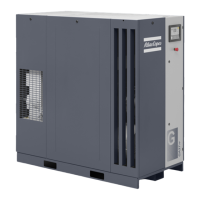
